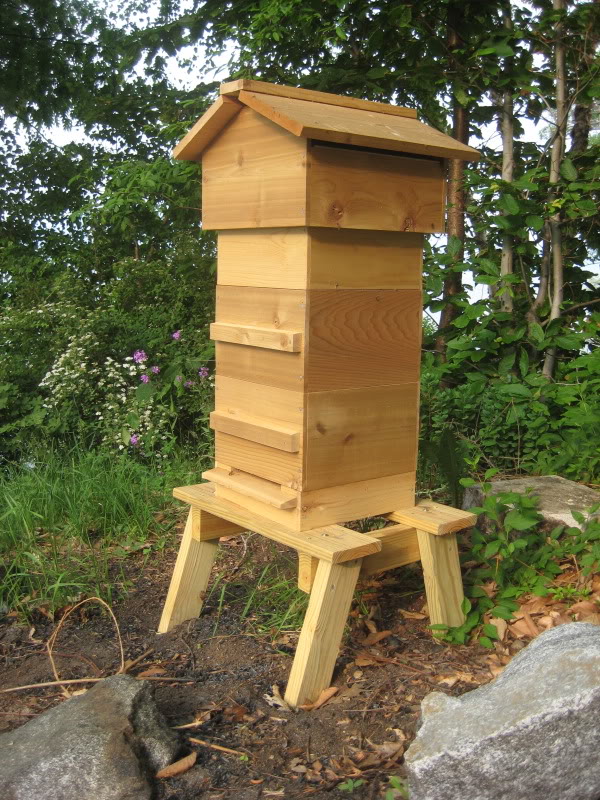Ah - that's the cheesewire to separate boxes - that's not supposed to be a good idea. I had hoped that the use of top bars would keep each layer of comb separate from the next.
Unfortunately, the bees do tend to build the comb right down and attach it to the top of the top bars in the next box down ... indeed, occasionally they will start building comb upwards from the top bars in a box added at the bottom before the box above it is full drawn.
The cheese wire is essential to ensure that any comb bridging between boxes is cut free - otherwise, you end with an unholy mess when you try and take the top box off to harvest the honey.
The idea is that it is a continuous process, take a box from the top, add a new one in at the bottom. The ideal configuration is not more than 5 boxes in a stack (they are quite shallow boxes) but some Warre afficionados seem to think it's a competition to see how tall you can get the stack.
Taking the top box at the point where the comb is all capped is the ideal - by then there should be no brood in it as the brood should be two or three boxes below the honey stores. Remove the roof and the Warre quilt, Cheese wire between top box and next one down. lean the box up at 45 degrees, look in to the bottom of the top box, see if the comb is fully capped - if so take the box off. Insert the 'lifter' (which you have made because I don't think you can buy one) into the stack (the boxes have bars at the sides so that you can insert the forks of the 'lifter' in to the stack, wind up the lifter with the stack suspended on the forks, insert new box at bottom of stack, wind lifter down. Replace quilt and roof and run off with your box of honey before the bees realise you have nicked it ... and all this fully suited and booted.
You can see why inspections of the brood area are really difficult and most Warre beekeepers don't bother as either tipping the stack or dismantling the stack are both problematical.
And let's not bother with the business of getting the honey out of the comb.
Try it ... then build a Long deep hive ... with frames - much more pleasurable experience. Or buy a couple of Paynes Poly Hives ..




